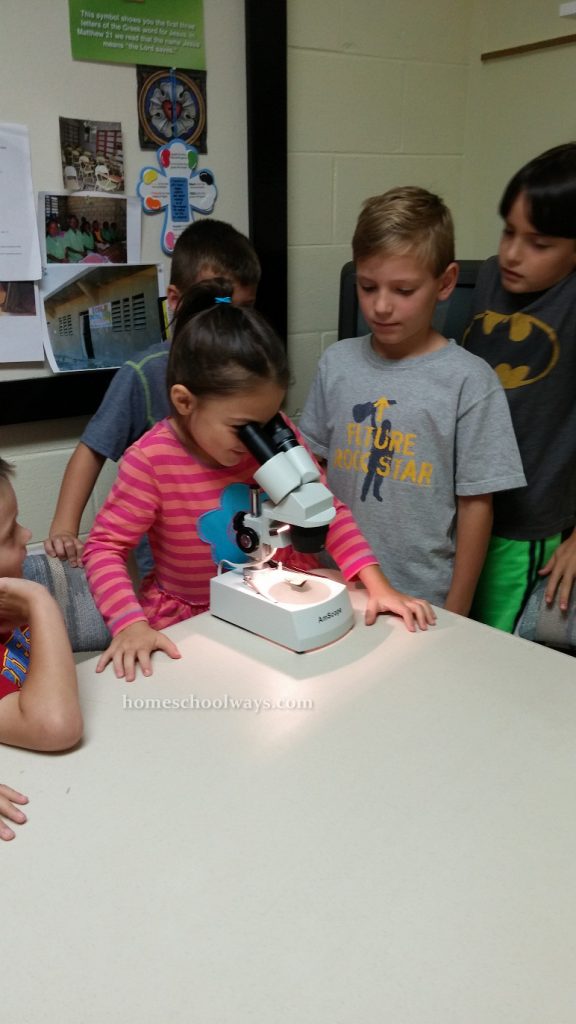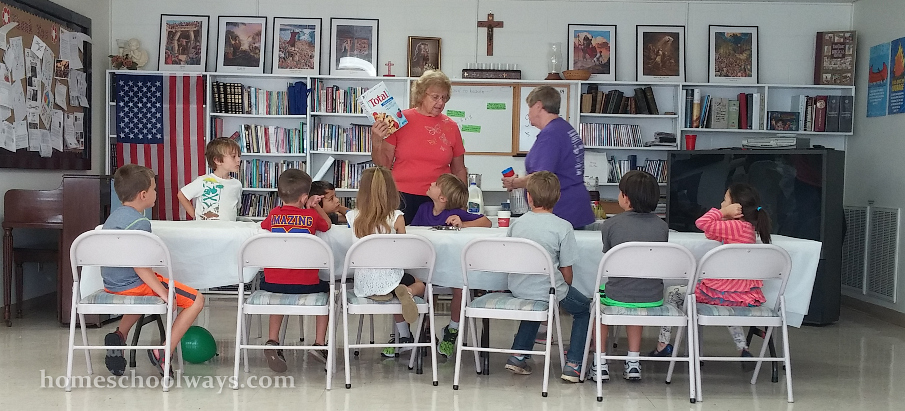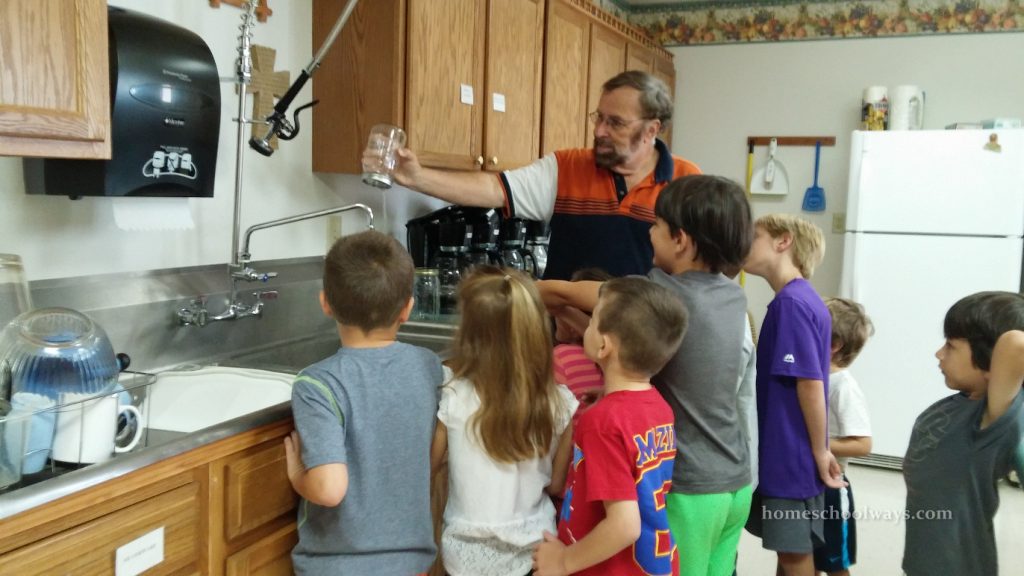This week, Monday-Friday, 9am-12noon, at the Lutheran Church on Pullen Road in Sevierville, our children are attending a science camp. Several science teachers from the local community college and from the public school system put this program together for free, in order to revive the old way of teaching science: through experiments.
The camp director said she has been a lifelong educator and has noticed that over the years the school system has transitioned to worksheets and away from hands-on experiences. For children, science is fun if you show them experiments and let them handle substances. That’s how they develop an inquisitive mind and they learn to think outside the box.
About 22 children showed up, grades 1-8. They were split into three groups by age. My children were together in the K-3 group, which was perfect. These groups rotated between four stations and worked with four different teachers. There was a snack in the middle of the morning. We usually do not snack, but I let the kids do this because it is easier this way. Plus, it buys me time to get home and get lunch ready once camp is over.
So the day began with Pastor Portier sharing some thoughts on how we are fearfully and wonderfully made. On the first day, for instance, he focused on cells. From there, my children’s group went into a classroom to study geology. They handled different rocks and listened to the classification of rocks. They looked into a microscope at different rocks.
On the next rotation, they watched the teacher blow up a balloon mainly with carbon dioxide and then got to play with it, noticing that it was much heavier than a balloon filled up with oxygen. The greatest experiment, which shocked most kids, was the classic with the water molecules glued together in a mason jar. By sliding a piece of paper under the mouth of the jar and waiting a few seconds, the molecules have time to gel and water will not flow out of the jar once the paper is removed.
Next, it was on to the nutrition table and last but not least, the engineering table, where they built different structures out of 3×5 index cards and tested their solidity with a beanie baby. We are very pleased with the program and though I know it tires us to get there early every day, we will benefit from being there.


